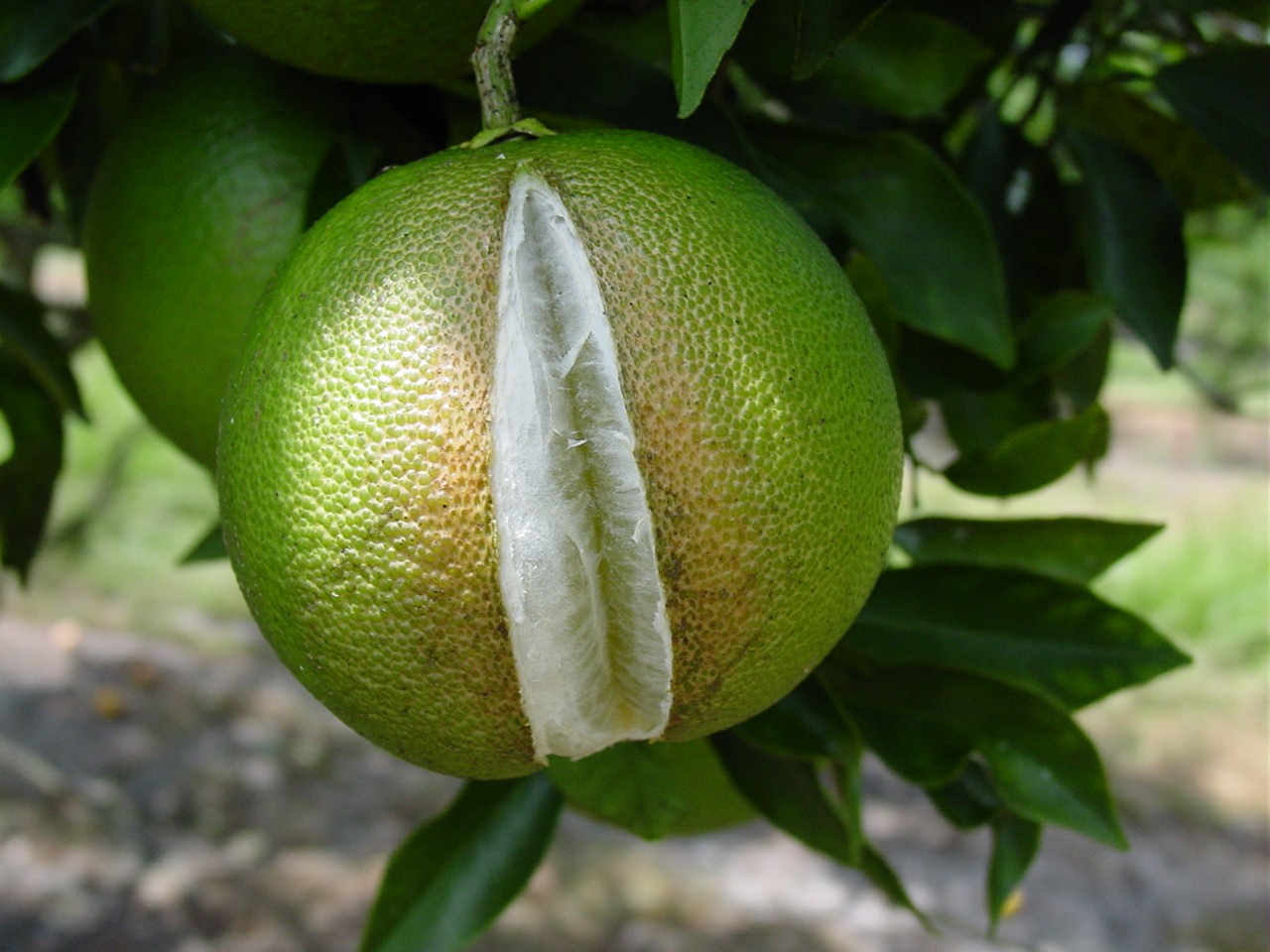Citrus fruit splitting is an important problem being addressed by growers, causing frustration and economic losses. This phenomenon occurs when the rinds of citrus fruits crack open, exposing the inner pulp. Understanding the reasons behind citrus fruit splitting is crucial for growers to implement effective preventive measures.
What are the causes and management strategies for citrus fruit splitting?
Irrigation Practices
Inconsistent watering regimes, particularly irregular watering followed by heavy irrigation, can lead to sudden changes in fruit size and internal pressure. This fluctuation causes the fruit rinds to expand rapidly, leading to splitting. Implement a consistent watering schedule, ensuring that citrus trees receive adequate moisture without sudden fluctuations. Drip irrigation systems or soaker hoses can help deliver water directly to the root zone while minimizing surface moisture.
Weather Conditions
Environmental factors such as heavy rain or sudden fluctuations in temperature, humidity, and sunlight intensity can stress the fruit, making it more susceptible to splitting. High temperatures followed by sudden cool spells are particularly problematic. Stay informed about weather forecasts and take preventive measures during periods of heavy rain or extreme temperature changes. Providing shade or using protective covers during heatwaves can help reduce stress on the fruit.
Soil Conditions
Poor soil drainage and nutrient imbalance can affect the overall health of the citrus trees, making them more susceptible to fruit splitting. Imbalanced soil pH levels and deficiencies in essential nutrients like calcium and boron can exacerbate the problem. Maintain well-draining soil and conduct regular soil tests to ensure proper nutrient levels. Amend the soil as needed to correct pH imbalances and nutrient deficiencies. Applying mulch around the base of trees helps regulate soil moisture and temperature.
Fruit Thinning
Overcrowded tree fruit clusters can compete for nutrients and sunlight, leading to irregular fruit development. Thinning out excess fruit early in the growing season helps distribute resources more evenly among the remaining fruits, reducing the likelihood of splitting. To promote uniform fruit development, thin out excess clusters early in the season. Aim for a spacing of 6 to 8 inches between individual fruits to reduce competition and ensure optimal nutrient uptake.
Figure 1. Fruit splitting in citrus. Credit: Mongi Zekri, UF/IFAS Extension
For more information, please read Managing fruit splitting in Florida citrus.
 0
0

